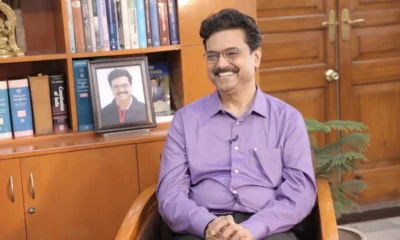Featured
GV Sanjay Reddy Opines Solar Power as The Future of Affordable Energy
As the world grapples with climate change and energy crisis, the solar industry has risen to meet the need of the hour with clean energy. Over the last decade, a significant growth in the use of solar power, in both industrial and domestic set ups, has been observed.

Featured
Top SUVs Under ₹50 Lakh in 2025: How Ford Endeavour Compares Against Its Rivals
The new-generation Endeavour (known globally as the Everest) is carving out a niche, not by being the flashiest, but by doubling down on what made it iconic: rugged capability, unmatched comfort, and Ford’s driver-first DNA.
Featured
7 Reasons Parents Should Stay in Touch With Their Child’s Preschool Teacher
Featured
Happy Navratri 2025: Wishes, messages, quotes, greetings, images, and whatsApp greetings
Celebrate Navratri 2025 with heartfelt wishes, messages, quotes, and WhatsApp greetings. Share the joy of the nine nights of devotion to Maa Durga, spread positivity, and bless your loved ones with happiness, strength, and prosperity this festive season.
-

 India News16 hours ago
India News16 hours agoDU VC Prof Yogesh Singh entrusted with additional charge of AICTE Chairman
-

 India News19 hours ago
India News19 hours agoDelhi High Court issues notice to Sonia Gandhi, Rahul Gandhi in National Herald case
-

 Cricket news23 hours ago
Cricket news23 hours agoRohit Sharma reveals retirement thoughts after 2023 World Cup final heartbreak
-

 Latest world news23 hours ago
Latest world news23 hours agoH-1B visa renewal delays leave hundreds of Indian workers stranded amid US social media checks
-

 India News23 hours ago
India News23 hours agoSonia Gandhi calls weakening of MGNREGA a collective moral failure, targets Centre in op-ed
-

 India News20 hours ago
India News20 hours agoYogi Adityanath’s do namoone remark sparks Akhilesh Yadav’s jab on BJP infighting
-

 India News17 hours ago
India News17 hours agoGoa nightclub fire case: Court extends police custody of Luthra brothers by five days
-

 Entertainment17 hours ago
Entertainment17 hours agoDhurandhar box office day 17: Ranveer Singh film crosses Rs 555 crore, enters all-time top 10




